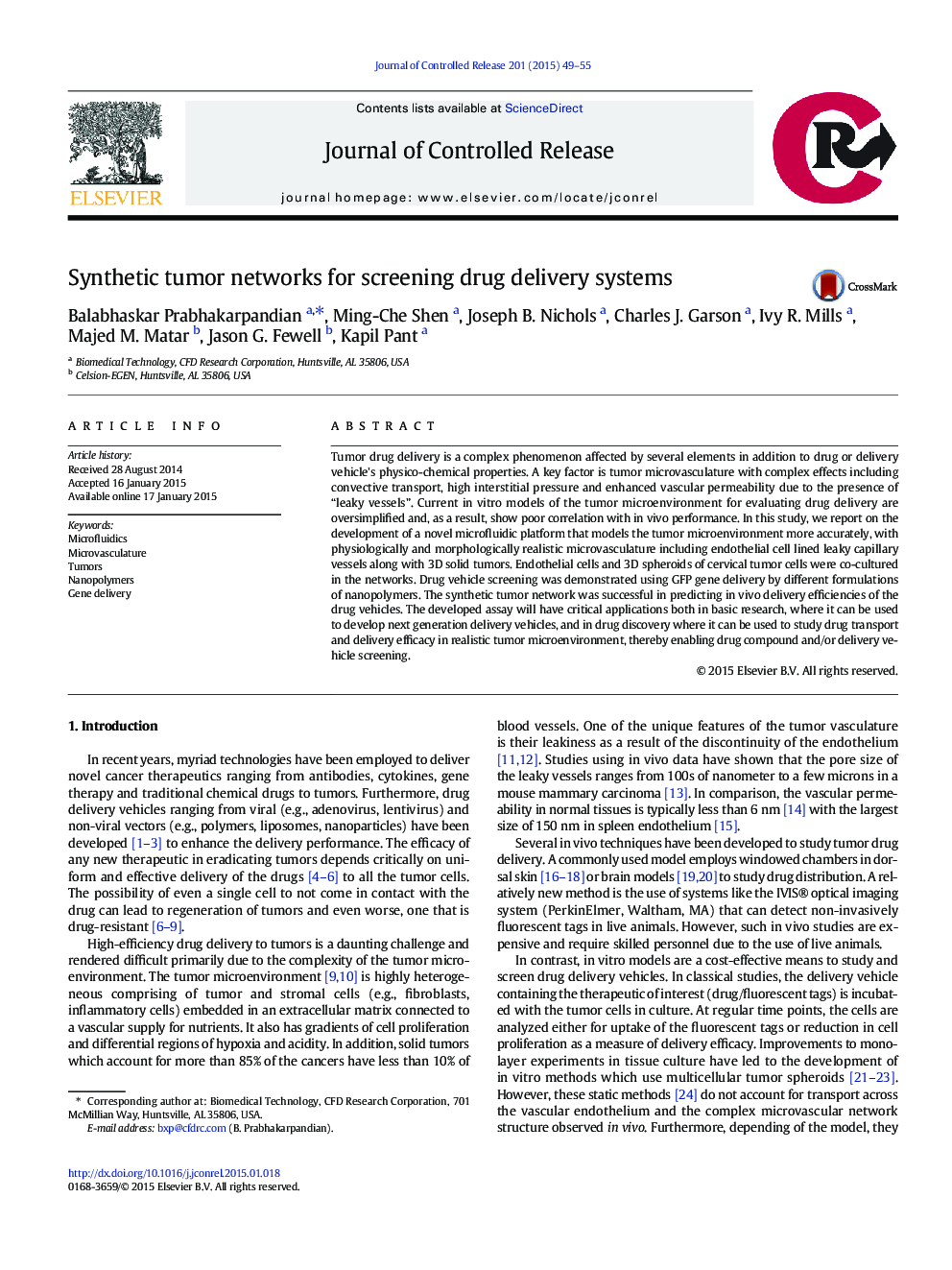| Article ID | Journal | Published Year | Pages | File Type |
|---|---|---|---|---|
| 1423831 | Journal of Controlled Release | 2015 | 7 Pages |
Tumor drug delivery is a complex phenomenon affected by several elements in addition to drug or delivery vehicle's physico-chemical properties. A key factor is tumor microvasculature with complex effects including convective transport, high interstitial pressure and enhanced vascular permeability due to the presence of “leaky vessels”. Current in vitro models of the tumor microenvironment for evaluating drug delivery are oversimplified and, as a result, show poor correlation with in vivo performance. In this study, we report on the development of a novel microfluidic platform that models the tumor microenvironment more accurately, with physiologically and morphologically realistic microvasculature including endothelial cell lined leaky capillary vessels along with 3D solid tumors. Endothelial cells and 3D spheroids of cervical tumor cells were co-cultured in the networks. Drug vehicle screening was demonstrated using GFP gene delivery by different formulations of nanopolymers. The synthetic tumor network was successful in predicting in vivo delivery efficiencies of the drug vehicles. The developed assay will have critical applications both in basic research, where it can be used to develop next generation delivery vehicles, and in drug discovery where it can be used to study drug transport and delivery efficacy in realistic tumor microenvironment, thereby enabling drug compound and/or delivery vehicle screening.
Graphical abstractFigure optionsDownload full-size imageDownload high-quality image (437 K)Download as PowerPoint slide
